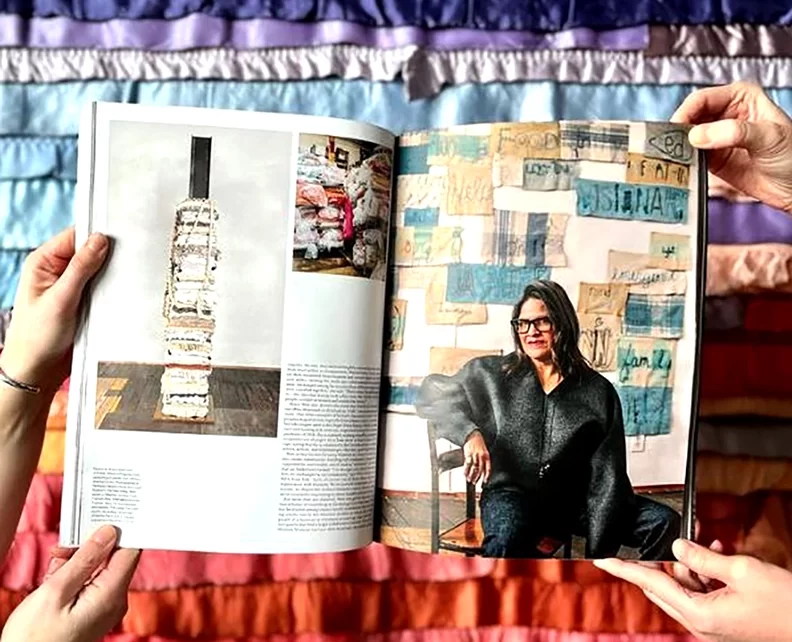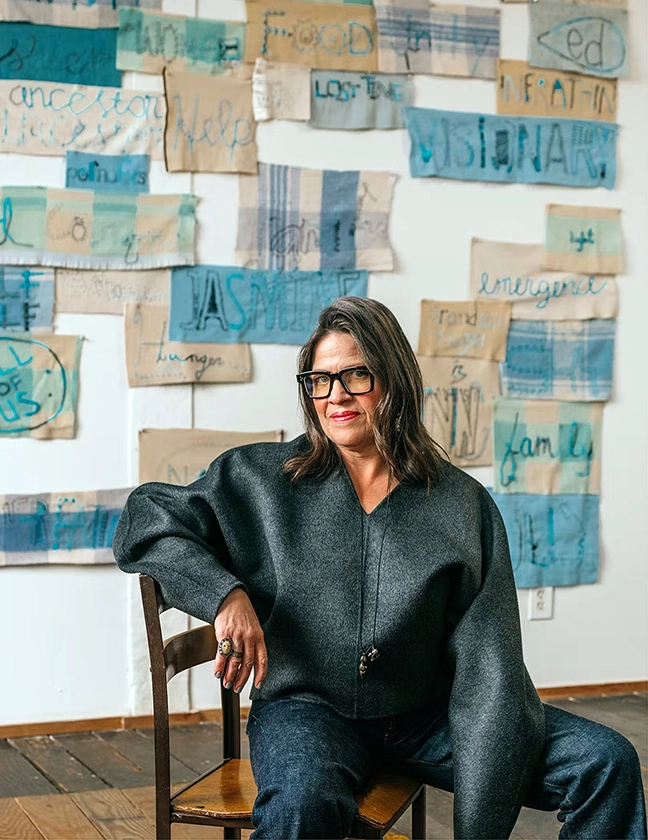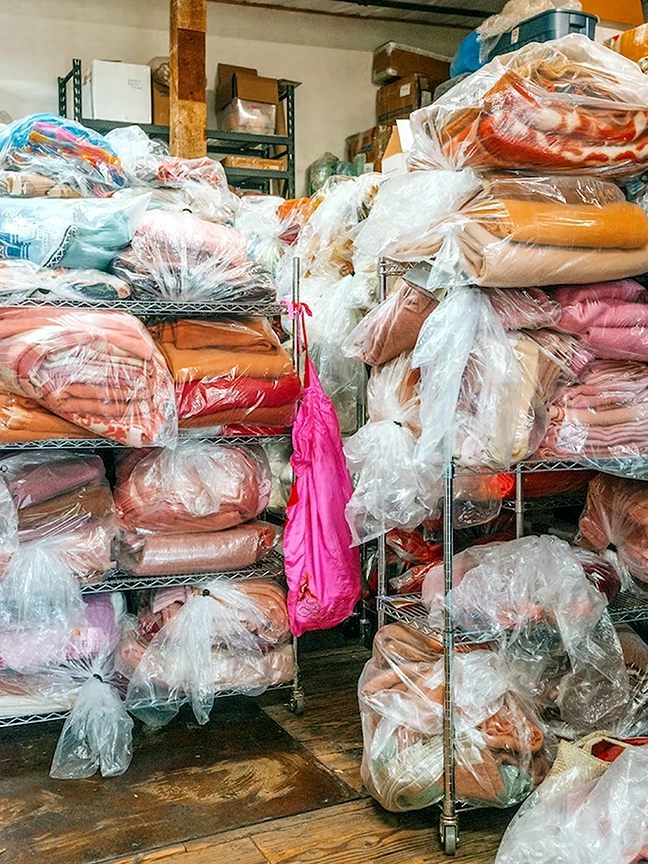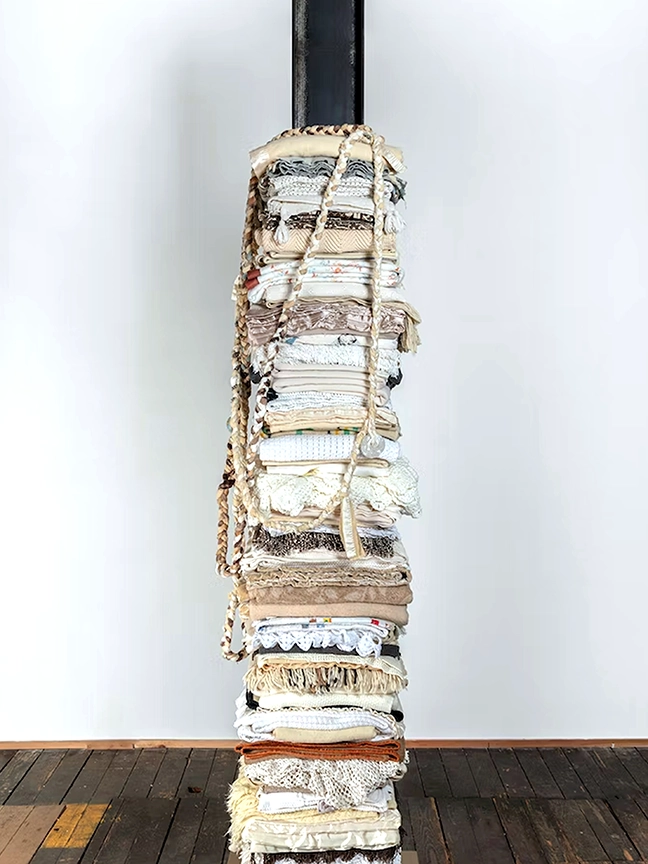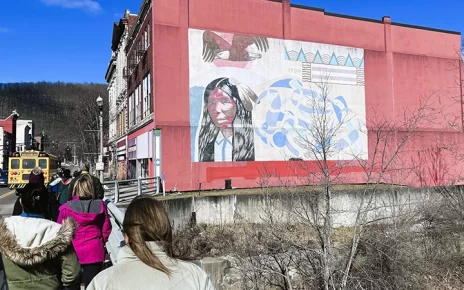Doing It Their Way: Native artists are finally gaining visibility in museums and galleries—upending long-held stereotypes in the process
February 2023 | By Jori Finkel | wmagazine.com | Ja:göh Marie!
Top photo: https://www.instagram.com/marie_watt_studio

Up until recently, you could count on one hand the number of Native American artists valued by the contemporary art world. One of them, Jaune Quick-to-See Smith, 83, has called it “the buckskin ceiling”—a rather vivid term for the institutional barriers or systemic racism preventing Native artists from landing regular exhibitions in mainstream art galleries and museums.
That much is finally changing. Thanks to work by artists and activists like Quick-to-See Smith, as well as the larger cultural reckoning that put the “I” in BIPOC, that buckskin ceiling has some serious cracks in it, with animal hides actually making an appearance in big galleries and museums. Also showing up: techno-themed Navajo weavings, abstract paintings inspired by Lakota quillwork, and more, as several artists are bringing ancestral techniques and materials into a contemporary art context, often overturning stereotypes about Native cultures in the process.
“It’s exciting to see how many Indigenous voices are being amplified in this moment, even if it only scratches the surface,” says Marie Watt, 55, an enrolled member of the Seneca Nation of Indians who lives in Portland, Oregon, and shows with galleries there, in New York, and in San Francisco. In effect, these artists are bridging at least two worlds: their ancestral communities and the rather nomadic—some would say rootless—contemporary art set, which typically hews to a white, male, Eurocentric colonizer’s version of history, with minimal knowledge of Indigenous cultures. One telling example: When gallerist Jessica Silverman took a group of figurative sculptures by Rose B. Simpson from the Santa Clara Pueblo to Art Basel in 2021, some viewers assumed at first sight the work was African.
“It’s wild how much isn’t known or understood,” says the Sičáŋğu Lakota artist Dyani White Hawk, 46, calling it “one of the biggest issues in navigating the contemporary art world as a Native person.” When the curators and other gatekeepers “don’t have a mental library that allows them to see and unpack and uncode things in your work, there can be a real communication breakdown,” she adds.
This knowledge vacuum puts a lot of pressure on Native artists to serve as educators or interpreters for non-Native audiences. While some embrace the role, going up against centuries of disinformation or outright cultural erasure is not easy. “It can be exhausting to show up and carry these conversations continually,” says Nicholas Galanin, 43, an artist of Tlingit and Unangax̂ heritage. But that also gives some of his work its urgency. “The artwork can carry these dialogues too, and break through to people without lecturing them, by sharing ideas, stories, dreams.”
Marie Watt also skewers the myth that Native art traditions, too often dismissed or devalued as “craft,” are conventional or static. One of her examples of historic innovation is how Native peoples shaped tin lids, typically from tobacco cans, to make the bell-like jingles used in the Jingle Dress Dance, which is associated with healing and, some say, originated during the influenza pandemic of 1918. She is currently making cloudlike, suspended sculptures out of jingles for a June show at Kavi Gupta in Chicago, noting that she is interested in the “reverberations—sounds, stories, actions, and relationships—that are a part of gathering.”
Watt is best known for using blankets as a way to evoke and also create community: building tall sculptures, sometimes supported by steel beams, out of used or “reclaimed” blankets that are folded and stacked. “I’ve thought a lot about how blankets are exchanged in our community,” says Watt, who got her MFA from Yale. “And, of course, we all have these intimate experiences with blankets: We’re received in blankets, and, in a sense, we depart this world in blankets—and in between that, we’re constantly imprinting on these humble pieces of cloth.”
But more than any material, Watt sees gathering and communal forms of storytelling as the through line of her work. She has facilitated sewing circles, loosely modeled on the storytelling circles run by her educator mother, in which she invites people at a museum or elsewhere to meet up, chat, and stitch text panels that feed a larger collaborative artwork. (One at the Whitney Museum last year drew hundreds; the result is going on show at Marc Straus Gallery, in New York, on March 12.) And the public art project she is now developing, a huge neon sign that says “Turtle Island,” the Seneca name for North America, promises to be a conversation starter. She doesn’t expect people to know the creation story behind the name, but she hopes they will be inspired to learn more and maybe see their homeland differently. “If we rethink what we call a place,” she offers, “it might change the way we steward it.”
Read more HERE

